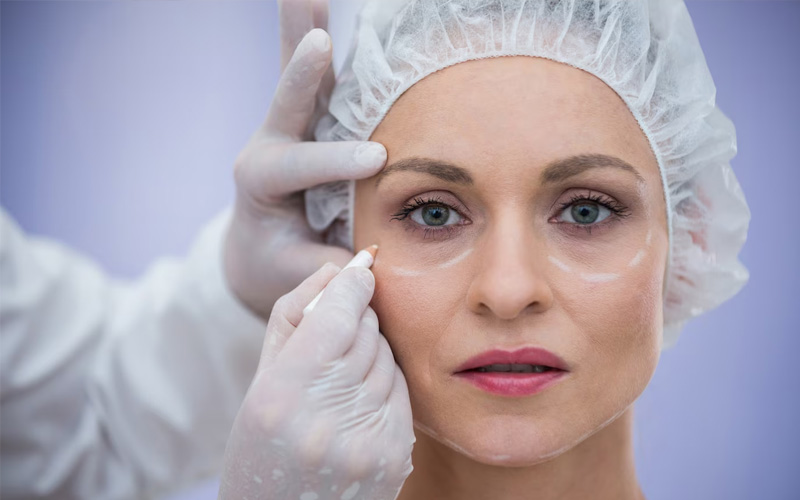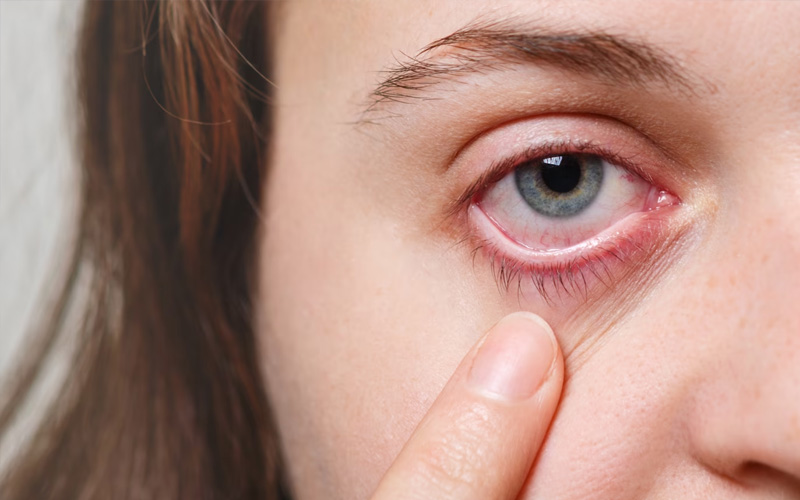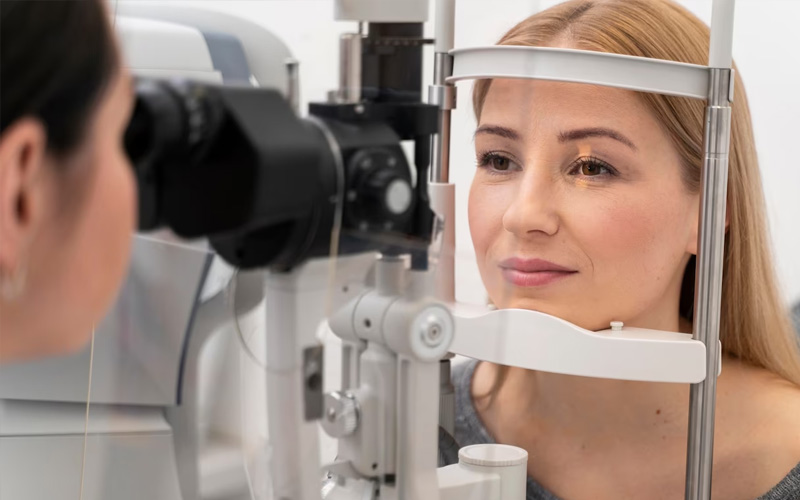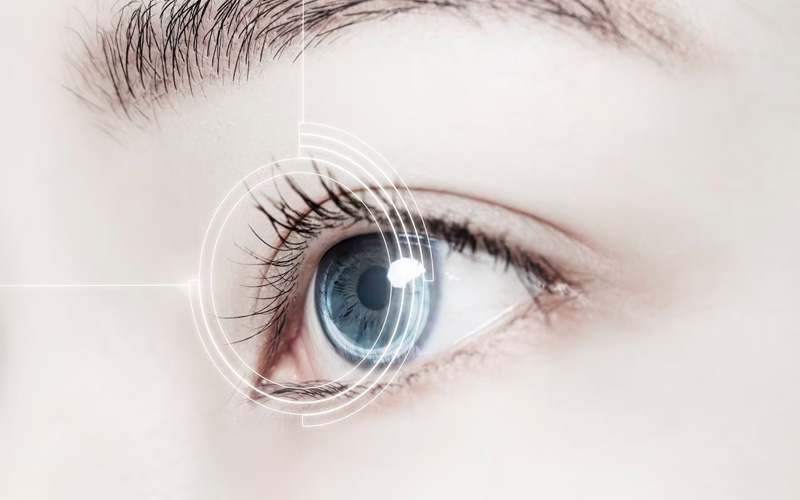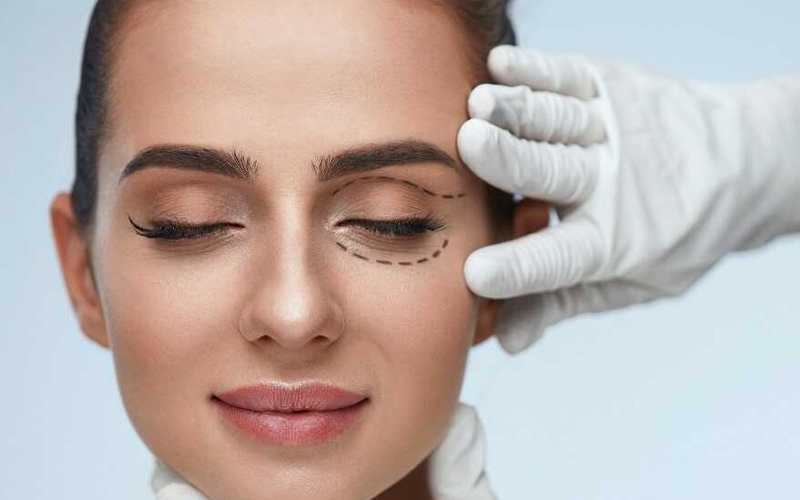Eye Loss and Prosthetic Eyes
Eye loss can result from trauma, accidents, diseases, or tumors affecting the eye or surrounding areas. In rare cases, some individuals are born with either a small or absent eye due to congenital conditions.
Losing an eye or being born without one is one of the most dramatic forms of organ loss. Individuals born without an eye or those who lose an eye later in life will experience both psychological and functional challenges. While the functional aspects of vision cannot be restored, reconstructing the aesthetic appearance of the eye can have profoundly positive effects on a person’s life. For infants born without an eye or with a deformed eye, early rehabilitation in the hands of skilled professionals is critical. Proper care can prevent underdevelopment of the facial tissues around the eye, aiding in both physical and psychological well-being as the child grows.
In cases of eye loss or deformity, working with an experienced team in oculoplastic and facial surgery will yield the best results. While vision may not be restored, improving appearance can help preserve psychological health.
The appropriate rehabilitation approach depends on factors such as the patient’s age, the cause of the eye loss, and the condition of the surrounding facial tissues. The basic approach involves preparing the area for a custom-made prosthetic eye that matches the appearance of the remaining eye. Both medical and surgical options may be considered.
Rehabilitation After Eye Loss
When dealing with a lost or deformed eye, surgical intervention aims to prepare the socket for prosthesis fitting. Whether due to congenital absence or later loss, the affected area often requires shaping and volume restoration to accommodate a prosthetic eye. For infants born without an eye or with a very small, undeveloped eye, early intervention is essential to ensure that the surrounding facial area develops properly. Without early treatment, the facial area around the eye can fail to develop symmetrically.
Diagnosis is typically made shortly after birth due to the visible anomaly, and the process of rehabilitation should begin as soon as possible. A specialist in ophthalmology, ideally an oculoplastic surgeon, should be involved early in the process. Starting from infancy, volume-expanding devices are placed in the eye socket to encourage growth of the surrounding facial bones and tissues, preventing facial asymmetry in the future. As the child grows older, these temporary expanders can be replaced with more permanent materials through surgery. Once the socket is well-formed, a custom-made prosthetic eye can be fitted.
In older patients, eye loss is typically due to trauma or cancer. The primary goal for these patients is to prepare the eye socket for a prosthetic eye. Due to potential tissue loss following trauma or cancer surgeries, detailed reconstructive procedures may be necessary. After surgery to restore adequate volume in the area, patients can usually begin using a prosthetic eye within 6-8 weeks.
Prosthetic eyes, while not restoring vision, play a crucial role in improving a person’s aesthetic appearance and psychological health, allowing individuals to lead more confident and fulfilling lives.
A prosthetic eye is an artificial organ used for rehabilitation in cases of eye loss or absence. However, a prosthetic eye does not restore vision. It serves to improve aesthetic appearance and boost psychological well-being, but it does not have the ability to see. As of now, there is no prosthetic eye available that can restore or provide vision.
The primary goal of using a prosthetic eye is to achieve a look that closely resembles the natural eye. Movement of the prosthetic is important in creating this resemblance. During surgery, the muscles responsible for eye movement can be attached to the implant placed in the eye socket, allowing for some degree of movement. However, the movement is never fully equal to that of a healthy eye. Despite this, for many patients, the prosthetic eye provides a sufficiently similar appearance, especially when looking straight ahead, offering a satisfactory aesthetic result.
The materials used for ocular prosthetics and the implants for volume restoration are designed to be biocompatible, meaning they generally do not cause pain. However, if pain occurs after the rehabilitation phase or while using the prosthetic, it could indicate an underlying issue. In such cases, it is important to consult a doctor for further evaluation and treatment.
Interventions performed on the damaged or undeveloped eye to enable the use of a prosthetic do not pose any risk to the healthy eye or its vision. On the contrary, in cases such as traumatic injuries (e.g., car accidents), early surgical removal or cleaning of the damaged eye is often recommended. This helps prevent the possibility of the immune system becoming sensitized, which could theoretically pose a threat to the healthy eye in rare cases. Therefore, the rehabilitation process after eye loss is not only safe for the remaining eye but may also prevent potential complications.
The loss of an eye or being born without one is one of the most dramatic forms of limb loss a person can experience. Accepting this situation and seeking rehabilitation can take time for both the patient and, in the case of congenital conditions, the parents. A constructive and patient approach is essential, addressing the concerns and questions of the patient or their family. Studies have shown that the rehabilitation of a missing eye can have significant positive effects on an individual’s psychological well-being. Undoubtedly, whether the eye loss is congenital or acquired, rehabilitation can enable a physically and psychologically healthy, fulfilling, and unrestricted life.
Consulting with an oculoplastic and facial plastic surgeon who is experienced in these delicate matters will enhance the success of the rehabilitation process. This professional guidance is crucial to helping patients or their families navigate the journey towards a better quality of life.




